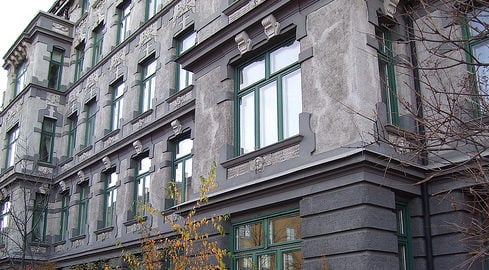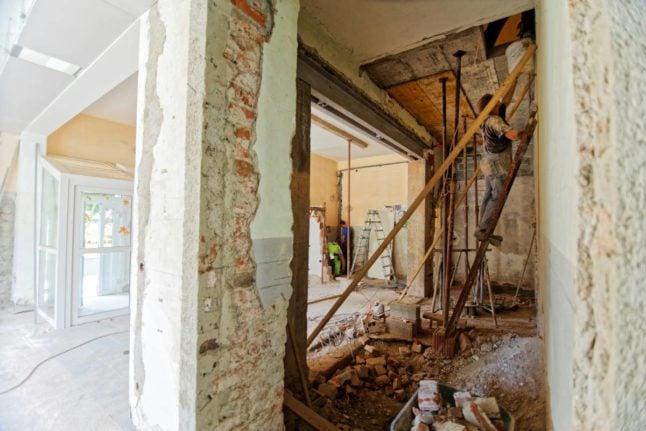OSLO
FEATURE: How to buy or rent a house in Norway
According to the IMF, Norway has the second worst housing bubble in the world, but renting can be even more expensive. Oslo-based journalist Audrey Andersen explains how to get your hands on a property.
Published: 30 September 2013 15:07 CEST

An upmarket Oslo apartment - Lachlan Hunt
Despite the soaring cost of property, Norway has one of the highest levels of home ownership in Europe, with almost 80 per cent of Norwegians owning rather than renting.
The main objective of Norwegian housing policy is to have as many people as possible become home owners. But some people do rent nonetheless in the hope that prices become more stable, or they finally build up enough funds to buy.
Renting
A tenant in Norway has more rights than in many other countries. For example, while a lease period cannot be for less than three years, a tenant can terminate the tenancy at any time without any reason. The only stipulation is that they give notice in writing.
The rights of a tenant are laid out in the lease agreement, and also in Norway's Tenancy Act. Once the lease is signed, rental costs must broadly follow the consumer price index for at least the first three years of the tenancy.
Rental costs in Norway can be very high, although exactly how high depends on which part of country you live in. O
Oslo and the neighbouring county, Bærem, are amongst the most expensive. Smaller properties have seen the sharpest increase in price as prospective renters, such as students, compete for tenancy.
The average monthly rent for a two room dwelling increased by 0.8 per cent between the second and the third quarter of 2012.
The average is now 9,048 NOK ($1,500), but rent varies according to the location and condition of the property.
An average two-bedroomed apartment measuring 70m2 in the nicer parts of Oslo can set you back as much as NOK 16,000 ($2,600) .
Rent is never paid more than once a month month, and is paid in advance. Tenants are usually expected to provide a deposit against damage equivalent to three months rent, which needs to transferred into a separate account for the duration of the tenancy.
In addition, the landlord should specify if the rent includes electricity and heating costs.
Heating in apartment blocks is generally switched off in May for the summer month. Often is isn't switched back on again until late September, no matter how cold it gets.
Leases
Standard lease documents are available through the consumer agency, www.forbrukportalen.no. A lease should always be signed and it should include a list of contents.
Disputes
Landlords can terminate a tenancy only if there are justifiable reasons for doing so. A tenant has a right to object and the termination will lapse if the landlord does not take the case to the Conciliations Board/HTU (The Rent Disputes Tribunal for Oslo and Akershus County).
Buying
At the end of 2012, house prices were 7.0 per cent higher than 2011, with the biggest increases seen in the Oslo area, where property prices shot up nine per cent over the year.
An average 84m2 apartment can set you back around 3,800,000 kroner ($632,000) or more, with prices for houses in the city out of most people’s price range.
Mortgages
The first step in buying a home in Norway begins with a mortgage application and, if successful, approval through a bank. The purchase price of a house or apartment is determined through a bidding process.
An important factor to keep in mind is that the deal is made when the seller accepts your bid. You should therefore never make an offer unless you are certain that your finances are in order beforehand.
Houses and apartments for sale and for rent are often advertised in local newspapers. Norwegian daily Aftenposten have a good selection on their website at www.aftenposten.no. There are also several useful websites, the most popular being Finn.no. www.finn.no. Other estate agents (eiendomsmegler) are www.privatmegler.no and www.dnbnoeiendom.no. Expect to pay between 1.5 and 2.5 per cent commission.
Mortgage repayment periods can be long but if buying for the first time, you can avail yourself of first-time buyer mortgage. This is a mortgage plan with the same interest rate for the full period, where you can borrow up to 100 per cent of the purchase price.
You will need to bring your tax return and pay slip to see how much of a loan you qualify for and the interest rate the bank offers. At www.finansportalen.no, you can search for which banks offer the lowest interest rate.
The Norwegian State Housing Bank, Husbank, also provides grants for building new houses or for the renovation of older properties. There are, however, strict guidelines and criteria which must be met. More information is the schemes available can be found at www.husbank.no.
Housing grants are available those experiencing permanent financial difficulties. These schemes are administered thought the local municipalities.
Recycling and waste collection
Different counties and provinces charge different waste disposal schemes. Waste is sorted into separate coloured bins. For example, blue bags for plastic. Residual waste is placed in separate bins. There are 430 municipalities in Norway which control and manage waste, water and sewerage.
Cultural quirks
The “dugnad” is a typically Norwegian tradtition whereby the residents and communities gather, usually in spring, to tidy up general residential areas with assigned specific tasks handed out to individual participants.
A “dugnad” usually takes between two to three hours to complete. The work day often ends with coffee, buns and, but rarely, with cold beer. It is generally frowned upon not to partake in this work but it is also a good way to get to known Norwegians.
Url copied to clipboard!


 Please whitelist us to continue reading.
Please whitelist us to continue reading.
Member comments